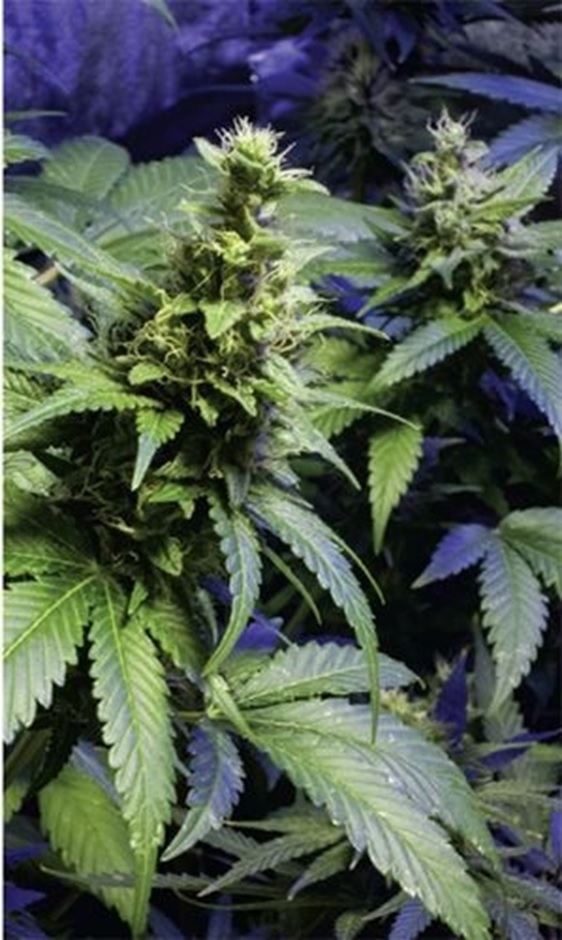
Cannabis prohibition emanates from a commercial conspiracy that was started in the 1920s.
The word marijuana itself was first brought into the English language by these early corporate offenders who needed to change the public’s perception of the cannabis plant from a useful fiber and medicine to a dangerous, addictive, and destructive substance to destroy the hemp industry and replace cannabis medicines and hemp fiber products with their toxic pharmaceutical drugs and petrochemical products. They achieved this by manipulating the media and printing fictitious stories connecting marijuana use and crime. The manipulation continues to this day, as former CBS News president Richard Salant explained when discussing the media’s role in manipulating the masses: “Our job is to give people not what they want, but what we decide they ought to have.”
Cannabis prohibition is indisputably the result of a corrupt conspiracy founded on lies, propaganda, and misinformation that has denied society access to a benign and highly beneficial medicinal plant for decades.

Cannabis has been used medically for millennia.
An article published in The Economist on April 27, 2006, under the heading, “Marijuana is medically useful, whether politicians like it or not,” stated:
“If Marijuana was unknown, and bio-prospectors were suddenly to find it in some remote mountain crevice, its discovery would no doubt be hailed as a medical breakthrough. Scientists would praise its potential for treating everything from pain to cancer and marvel at its rich pharmacopeia; many of whose chemicals mimic vital molecules in the human body.”
The medicinal use of cannabis predates written history. Cannabis preparations have traditionally been used as treatments for various conditions for thousands of years in India, China, the Middle East, Southeast Asia, South Africa, and South America. Furthermore, evidence of medicinal cannabis use dating from 1600 BCE has been found in Egypt, where it was used as a fumigant, topical salve, and suppository.
One of the earliest accounts of medical cannabis use can be found in the Chinese pharmacopeia text Pen-Tsao Kang-Mu (The Great Herbal), which was written in 100 CE, but actually dates back to Emperor Shen-Nung in 2800 BCE.7 The author Li Shih Chen referred to works from previous writers who for centuries regarded cannabis and its seeds as both food and medicine. This early text correctly identifies the flowering tops of cannabis plants (Ma-fen) as the most useful and potent for the production of medicines and recommends cannabis to treat menstrual fatigue, fevers, arthritis, and malaria, as well as being effective as an analgesic. In the second century CE, Chinese surgeon Hua Tuo is documented as using an anesthetic made from cannabis resin and wine (Ma-yo) to perform painless complex surgical procedures, including limb amputations.
The Greek physician and botanist Pedanius Dioscorides traveled throughout the Roman and Greek empires to obtain material for his publication Materia Medica, which includes references to the plant Cannabis Sativa L. (from the Greek word cannabis), described as useful in the manufacturing of rope, with the juice of the seeds reported to be effective for treating earaches and diminishing sexual desire.8 Materia Medica was translated and published throughout the known world and was used as a medical reference resource up until the 16th Century. It was a precursor to modern pharmacopeias and is one of the most influential herbalist books ever written.
America’s first law concerning cannabis was enacted at Jamestown Colony, Virginia in 1619. Far from prohibiting cannabis, the law stated that all farmers were “ordered” to grow Indian hemp seed. The U.S. Census of 1850 records 8,327 cannabis plantations over 2,000 acres, all producing cannabis hemp for cloth, canvas, and rope. Cannabis first appeared in the U.S. Pharmacopoeia in 1851 (3rd edition) and until prohibition was introduced, cannabis was the primary treatment for over 100 separate illnesses and diseases. By the time the 12th edition of the Pharmacopeia was published, cannabis had been officially removed and its use in medical research had been halted.
In the 1930s, the U.S. federal government backed the campaign of Harry Anslinger and his newly formed Bureau of Narcotics. Anslinger was a corrupt, racist bigot who to build up his new organization sought to generate fear of cannabis use through propaganda and lies. Anslinger created nationwide concern over a problem that did not exist by demonizing marijuana through spurious tales of crime, violence, and insanity. The Bureau of Narcotics promoted what they called the “Gore Files”; wild “reefer madness” tales of murder, violence, loose morals, and the effects cannabis had on the “degenerate races,” which cynically exploited the endemic racism that was prevalent at the time. By associating marijuana use with ethnic minorities he ensured that the majority of white Americans would be sympathetic to any planned prohibition.